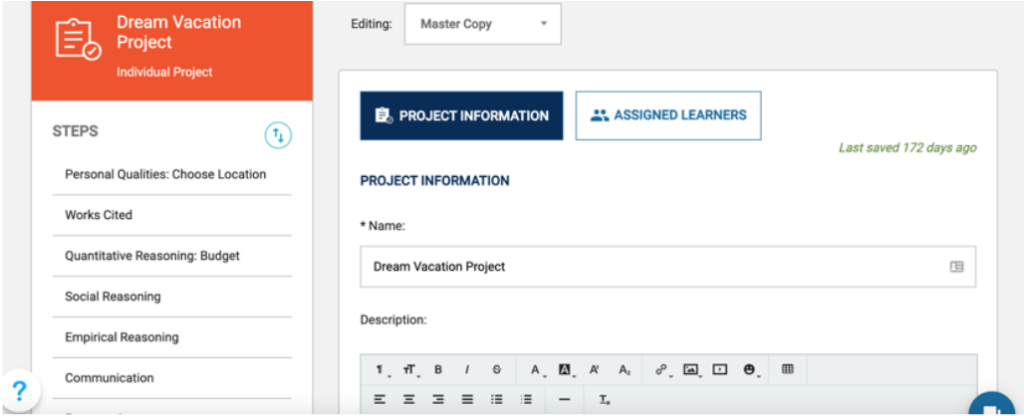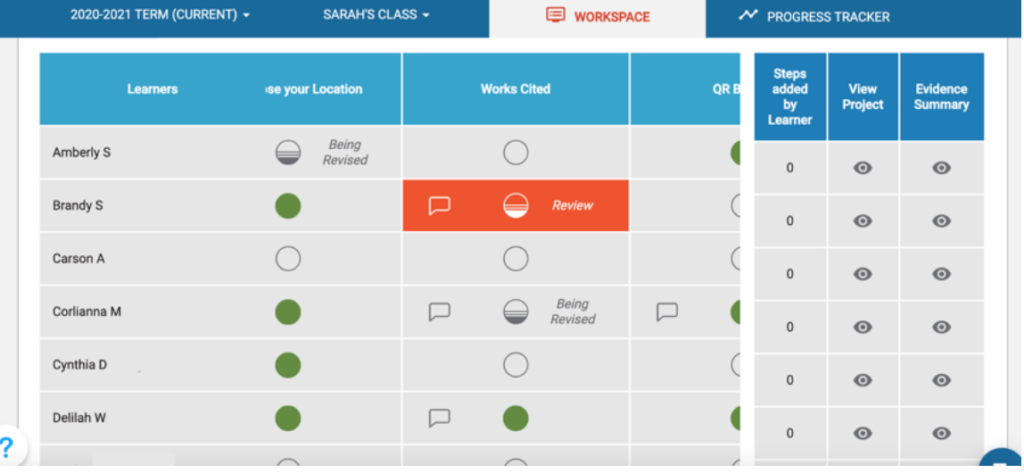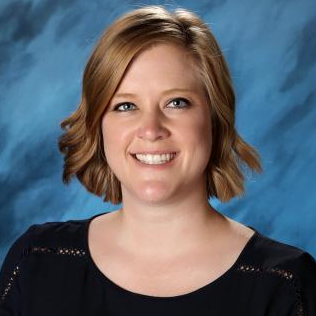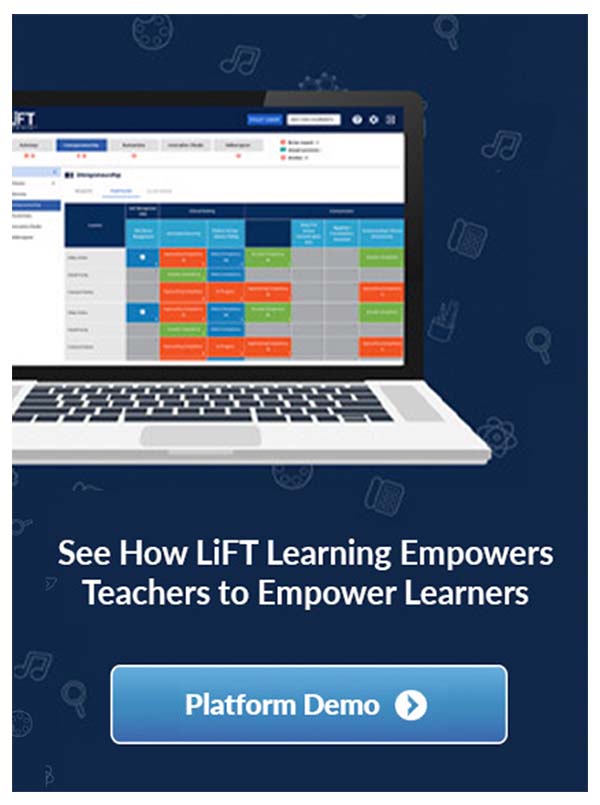Dream Vacation Project

Union High School: A LiFT Learning Case Story

Sarah Moore created a lesson this fall for her 11th grade students at Union High School in Nampa, Idaho. As a Big Picture Learning school, Sarah and her colleagues take great pride in providing their learners with real world experiences where students are assessed on demonstrations of learning. Part inspiration and part aspiration, Sarah wanted to give her students an experience that would pull them out of the physical isolation of a global pandemic and into a dream space of vacation travel. All the while, having students walk away with applicable skills to plan, execute and even promote their own journey.
Sarah introduced her project to the students with the end product in mind: students will take on the role of a travel agent to sell this vacation by presenting it to a panel of classmates using gathered research and visual support. By organizing the project steps explicitly around quantitative, social, and empirical reasoning as well as communication, Sarah struck a balance between highly engaging content and making the intended outcomes transparent to learners. Organizing projects in this way really helps to prepare learners to achieve success, “LiFT is a very helpful tool to organize and pace projects. It helps students to understand each step of a project, organizing their evidence of learning, and learning to pace themselves instead of procrastinating.”

The Dream Vacation Project was set up using LiFT’s project builder. Teachers can assign individual projects or create groups of students for a collaborative learning experience.
“Sarah wanted to give her students an experience that would pull them out of the physical isolation of a global pandemic and into a dream space of vacation travel.“

Educators like Sarah can engage and inspire their students by customizing the project using embedded videos, images and emojis. For those classrooms using Google, educators can assign Google templates to learners for automatic assignment and permission handling.

LiFT’s learner-centered features allow students to create their own steps on a teacher generated framework, or they can create their own project from beginning to end.
Some students are able to “fly direct” to the learning outcomes, while others may take unexpected layovers in destinations unknown. Sarah is able to customize each learners’ project to provide the personal support needed, while also monitoring progress using LiFT’s teacher dashboard for those who are off and flying. No matter where learners start their journey, feedback plays a critical role in ensuring each student safely arrives at the destination, “I really appreciate that giving feedback on LiFT is so user friendly. I can edit their document, send it back for revisions and append a comment to explain either what needs to be edited, or where to look for the edits they need to make.”

LiFT’s feedback feature allows for general conversation as well as more targeted discussion based on tagged learning objectives. A more granular feedback cycle close to the criteria allows learners to own their learning.
Sarah has found value in LiFT’s progress indicators and the way it makes criteria transparent. “The process was so easy, and the students get so excited to earn their green dot once their project is tip top. It has been a great motivator for students and myself to start regularly using these features and to help us all stay organized.”

Educators can score evidence using rubrics, weighted numerical scores, or both. One click sends artifacts of learning to personalized skill portfolios.
Success in the Dream Vacation project has inspired Sarah to leverage even more LiFT features, especially increasing the emphasis on skill development – something the entire school is working towards, together. “As a school, we are working to narrow down our ‘I can statements’ or competencies. I have also been working to switch my focus more on the competencies than on the project. The project should be a means to show learning in the competencies.” Sarah’s colleague Kristy Glen added, “We are working to get our students to focus on the skills so that they can better understand their purpose and why they are doing the project.”

LiFT’s progress tracker helps Sarah and her colleagues curate a portfolio for every skill, with an embedded rubric to holistically assess mastery, supported by an ever growing body of diverse evidence.
By harnessing the power of LiFT, Sarah and her colleagues are able to promote self direction and independence in their students with a vision to activate personalized skill portfolios for each learner. With carefully constructed projects and skills-based feedback, students are empowered to take charge of their learning and teachers have a pathway to meet the unique needs of every student.
Sarah and her colleagues at Union High School are a model example of Project-Based Learning. They are staying true to their mission “to promote an entrepreneurial growth mindset through passion-driven, project based, individualized learning.” The LiFT Learning team is excited to support Sarah and her team as they deepen their relationship with Competency-Based Education with a vision to activate personalized skill portfolios for each learner.

Sarah is an Advisor at Union High School. Her passion has always been in education with a Bachelor of Science degree in Mathematics Education and a Master Social Work degree. Sarah has worked as a high school mathematics teacher, preschool teacher, and school social worker. She was drawn to Union’s Big Picture Learning model which includes real world experience through internships and community involvement, with project based learning in the classroom.
Do you have a favorite project that you would like to share with our community of users? If so, please email CaseStudies@LiFTLearning.com so that we can feature your work in a future case study.

